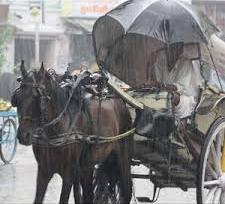More than 600 people are confirmed dead. More than 40,000 are stranded in the mountains of Uttarakhand state. Although rescue workers are said to be uncoordinated in the poor weather, survivors are being airlifted from the worst-hit areas and special trains are carrying people to safety. Search and rescue efforts have been stepped up as more downpours are expected in the difficult mountainous terrain.
Tourists and pilgrims were among those caught up in the floods, which washed away homes, roads and bridges. Relatives of those still missing are awaiting news. Medicines and food are being flown to the affected areas.
Source: About.com. Every summer, southern Asia and especially India, is drenched by rain that comes from moist air masses that move in from the Indian Ocean to the south. These rains, and the air masses that bring them, are known as monsoons.
However, the term monsoon refers not only to the summer rains but to the entire cycle that consists of both summer moist onshore winds and rain from the south as well as the offshore dry winter winds that blow from the continent to the Indian Ocean.
Smaller monsoons take place in equatorial Africa, northern Australia, and, to a lesser extent, in the southwestern United States.
Almost half of the world's population lives in areas affected by the monsoons of Asia and most of these people are subsistence farmers, so the coming and goings of the monsoon are vital to their livelihood to grow food to feed themselves. Too much or two little rain from the monsoon can mean disaster in the form of famine or flood.
The wet monsoons, which begins almost suddenly in June, are especially important to India, Bangladesh, and Myanmar (Burma). They are responsible for almost 90 percent of India's water supply. The rains usually last until September.

Please, spare a moment to send your prayers and good wishes to those who are trapped in hazardous terrain while floodwater climbs higher. I can't imagine how they must feel, cold, hungry and without shelter.

 RSS Feed
RSS Feed






